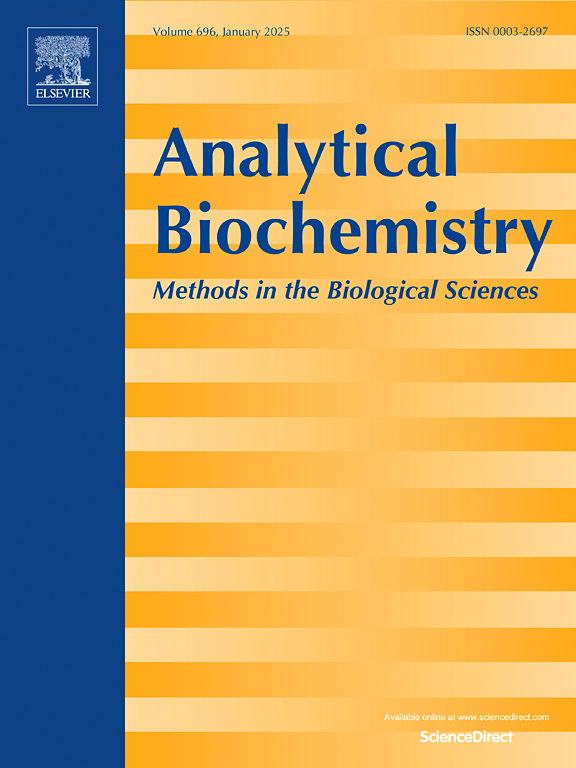Differentiation of glioblastoma G4 and two types of meningiomas using FTIR spectra and machine learning
IF 2.6
4区 生物学
Q2 BIOCHEMICAL RESEARCH METHODS
引用次数: 0
Abstract
Brain tumors are among the most dangerous, due to their location in the organ that governs all life processes. Moreover, the high differentiation of these poses a challenge in diagnostics. Therefore, this study focused on the chemical differentiation of glioblastoma G4 (GBM) and two types of meningiomas (atypical - MAtyp and angiomatous - MAng) were done using Fourier Transform InfraRed (FTIR) spectroscopy, combined with statistical, multivariate, machine learning and rate of spectrum changes methods. The positions of all analyzed peaks differed between GBM and meningiomas. However, for two types of meningiomas, only shift of peaks corresponding to CH2 bending vibrations, symmetric stretching vibrations of CH2, amide A, amide I, C![]() O lipids vibrations, asymmetric stretching vibrations of CH3 were observed. Principal Component Analysis showed clear differentiation between GBM and the meningiomas. Decision tree clearly showed that wavenumbers corresponding to C
O lipids vibrations, asymmetric stretching vibrations of CH3 were observed. Principal Component Analysis showed clear differentiation between GBM and the meningiomas. Decision tree clearly showed that wavenumbers corresponding to C![]() O lipids vibrations provided the highest differentiation between GBM and meningiomas tissues, while amide I for two types of meningiomas. The accuracy and specificity of the results for GBM and meningiomas were more than 90 %, while for MAtyp and MAng, these parameters were around 80 %.
O lipids vibrations provided the highest differentiation between GBM and meningiomas tissues, while amide I for two types of meningiomas. The accuracy and specificity of the results for GBM and meningiomas were more than 90 %, while for MAtyp and MAng, these parameters were around 80 %.

利用FTIR光谱和机器学习鉴别胶质母细胞瘤G4和两种脑膜瘤。
脑肿瘤是最危险的肿瘤之一,因为它们位于支配所有生命过程的器官中。此外,这些肿瘤的高度分化也给诊断带来了挑战。因此,本研究利用傅立叶变换红外光谱(FTIR),结合统计、多元、机器学习和光谱变化率等方法,重点研究了胶质母细胞瘤 G4(GBM)和两种类型脑膜瘤(非典型 MAtyp 和血管瘤 MAng)的化学分化。GBM 和脑膜瘤的所有分析峰的位置都不同。然而,在两种脑膜瘤中,只观察到与 CH2 弯曲振动、CH2 对称伸缩振动、酰胺 A、酰胺 I、C=O 脂肪振动、CH3 不对称伸缩振动相对应的峰的移动。主成分分析表明,GBM 和脑膜瘤之间有明显的区别。决策树清楚地表明,与 C=O 脂类振动相对应的波数对 GBM 和脑膜瘤组织的区分度最高,而酰胺 I 则对两类脑膜瘤的区分度最高。该结果对 GBM 和脑膜瘤的准确性和特异性均超过 90%,而对 MAtyp 和 MAng 的准确性和特异性均在 80% 左右。
本文章由计算机程序翻译,如有差异,请以英文原文为准。
求助全文
约1分钟内获得全文
求助全文
来源期刊

Analytical biochemistry
生物-分析化学
CiteScore
5.70
自引率
0.00%
发文量
283
审稿时长
44 days
期刊介绍:
The journal''s title Analytical Biochemistry: Methods in the Biological Sciences declares its broad scope: methods for the basic biological sciences that include biochemistry, molecular genetics, cell biology, proteomics, immunology, bioinformatics and wherever the frontiers of research take the field.
The emphasis is on methods from the strictly analytical to the more preparative that would include novel approaches to protein purification as well as improvements in cell and organ culture. The actual techniques are equally inclusive ranging from aptamers to zymology.
The journal has been particularly active in:
-Analytical techniques for biological molecules-
Aptamer selection and utilization-
Biosensors-
Chromatography-
Cloning, sequencing and mutagenesis-
Electrochemical methods-
Electrophoresis-
Enzyme characterization methods-
Immunological approaches-
Mass spectrometry of proteins and nucleic acids-
Metabolomics-
Nano level techniques-
Optical spectroscopy in all its forms.
The journal is reluctant to include most drug and strictly clinical studies as there are more suitable publication platforms for these types of papers.
 求助内容:
求助内容: 应助结果提醒方式:
应助结果提醒方式:


